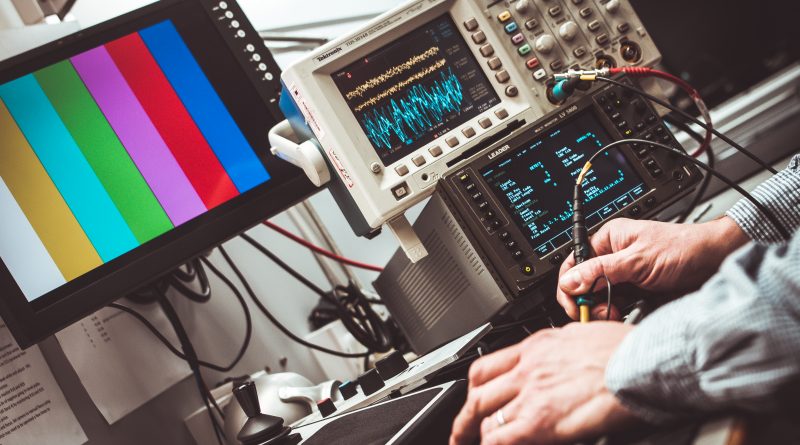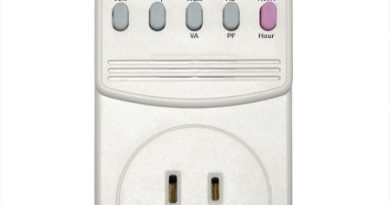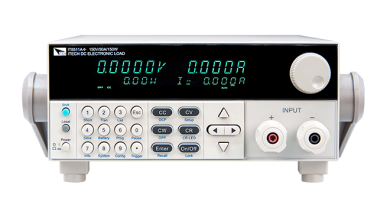How Electronic Components Work
Given how dependent we, as a society, are on electronics, it makes sense that more people are showing interest in understanding their basic composition. Whether it’s out of career necessity or just pure curiosity, people want to know how gadgets like phones, laptops, televisions, radios, and tablets work. Beyond electronic entertainment, you also have the technologies used in industries like healthcare, aviation, education, and so on. So there’s no denying that electronics play an integral role in the modern world.
If you’ve landed on this article, then you probably have a vested (or casual) interest in how electronics work. We can tell you, as early as now, that the magic all happens in the electronic circuit.
Table of contents:
- Electronic Circuits
- Elements of an Electronic Circuit
- Conducting Path
- Voltage Source
- Load
- Type of Electronic Circuits
- Closed Circuit
- Open Circuit
- Integrated Circuit
- Short Circuit
- Printed Circuit Boards (PCBs)
- Electronic Components
- Capacitors
- Resistors
- Diodes
- Relays
- Quartz Crystals
- Conclusion
As always if you have any questions don’t hesitate to contact us!
Electronic Circuits

All electronics depend on electronic circuits to function. These are basically small structures found inside machines that direct and control electric current in order to perform different functions. What they do can be broken down into two general steps:
(1) Process external information
(2) Dictate the electronics’ response based on that information
Depending on the stimuli or on their programming, they can control the electric current to compute information, amplify signals, redirect power, or transfer data—just to name a few processes.
Electronic circuits use a number of complex electronic components and elements to achieve their specified process-and-respond systems. However, generally speaking, all electronic circuit elements can be categorized into three basic functions:
- A conducting path
- A voltage source
- A load
Elements of an Electronic Circuit
Conducting Path
This is the system or pathway where the electric circuit in all electronic circuits flow. Earlier, we mentioned that electronic circuits control the flow of an electric current in order to process information and respond accordingly. The conducting path acts as the container that dictates the current’s exact route.
Voltage Source
Whereas the conducting path directs energy, the voltage source supplies it. This element is typically a two-terminal device that provides potential difference (aka voltage) between two points. Common examples of voltage sources include batteries, generators, and power systems.
Load
The voltage source is the element that supplies energy; the load is the element that consumes it. The simplest example of this is a light bulb. If you’re familiar with resistors, capacitors, or transistors (some of which we’ll cover in great detail further on), then you’re already familiar with more complex examples of a load.
Types of Electronic Circuits

In order for a circuit to work, all three elements must be integrated or connected with each other in a closed loop. Everything starts and ends in the same place; no disconnections, interruptions, or dead-ends. However, there are some circuits that intentionally do not form a loop. These are known as open circuits, which is one type of circuit. Other types of circuits are the closed circuit, the integrated circuit, the short circuit, and the printed circuit board.
Closed Circuit
This is the most common type of circuit. All components are connected to form one uninterrupted loop which may or may not perform a function, depending on the situation (like a circuit connected to a dead power source).
Open Circuit
A circuit that doesn’t form a loop. One or more electronic components are disconnected either intentionally (like how a light switch turns a light bulb on and off) or accidentally.
Integrated Circuit
This is a tiny electronic circuit that can fit inside small silicon chips (like the ones found in laptops, mobile phones, tablets, and the like). Integrated circuits (or ICs) are sophisticated pieces of tech used to improve the efficiency of electronic devices by reducing their size and, consequently, their manufacturing costs.
Short Circuit
A short circuit happens when two points in an electric circuit form a low-resistance connection. The current typically prefer this new pathway over the intended route, which can, in turn, throw the circuit’s function off-balance. This is why short circuits are often equated to serious or damaging issues in electronic equipment (like batteries exploding or fuse boxes malfunctioning).
PCBs, like integrated circuits, are tiny electronic circuits made up of tinier electronic components. They’re typically made of a plastic board with connecting copper tracks and compartments for the components, hence the name. PCBs aren’t as sophisticated as ICs, though, and are more commonly found in equipment with simpler circuits (i.e., radios, television sets, etc.)
Electronic Components
Electronic circuits are basically the lifelines of all-electric appliances. Without them, the machine wouldn’t function. However, they themselves wouldn’t function either if not for their basic electronic components. There are a lot of known components—easily over several dozen—but we’ll cover the five most common (and arguably most important) ones for now:
- Capacitors
- Resistors
- Diodes
- Relays
- Quartz Crystals
Capacitors
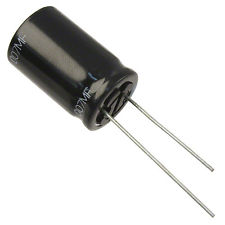
A capacitor, as we mentioned earlier, can be considered a load-type element in a circuit. It’s a passive, two-terminal electronic component that basically stores energy electrostatically—which basically refers to electric charges at rest. A capacitor is similar to a battery in the sense that it stores electricity. However, it isn’t a voltage source. Unlike a battery, it’s capable of charging and discharging the electric energy in a split second.
What is it made of?
- Two electrical conductors/plates
- One insulator (dielectric)
- Two electrical connections
How does it work?
There are two electrical conductors or plates (typically made of conductive material like aluminum foil) separated by an insulator (a dielectric made of non-conductive material, like glass, paper, or ceramic). They have two protruding electrical connections that can be used to fix the electronic component in a circuit.
When voltage is applied over the two plates—or they’re connected directly to a voltage source—an electric field develops across the insulator. This, in turn, causes both plates to accumulate charges: one positive, one negative.
When this happens, the capacitor then has a charge that it is capable of holding on to even if it’s disconnected from the source. Once it’s connected to another load, the stored energy in the capacitor can then flow to that load.
Related Terms
Capacitance
Capacitance refers to the amount of energy a capacitor is capable of storing. The higher the capacitance, the more energy it can store. Capacitance can be increased by:
- moving the conductive plates closer together
- increasing the size of the conductive plates
- enhancing the dielectric’s insulating qualities
Resistors

As their name suggests, resistors are basically electrical components that can resist the flow of the current. Another two-terminal device that is found in practically every electrical circuit, resistors are perhaps the simplest in design and function.
What is it made of?
- One (1) copper wire
- One (1) insulating material
How does it work?
A copper wire is wrapped around an insulating material—typically a ceramic rod—as many times as needed, with the number of turns and the thinness of the wire being directly proportional to the electronic component’s resistance. By forcing the current to flow through the wire, the resistor is able to control the voltage.
Think of the voltage-current passing through the copper wire as water flowing through a pipe. Long thin pipes allow much less water to flow through compared to pipes that are shorter and wider. Similarly, a current passing through a thin wire will slow down considerably due to the electrons lacking sufficient room to travel. And as the wire continues to wrap around and around, more electrons are left behind or forced to stop, significantly reducing the resulting voltage.
Resistors are necessary for controlling voltage and keeping the current at safe levels. This, in turn, prevents the equipment from potentially overheating.
Related Terms
Polarity. Resistors are blind to circuit polarity (aka the positive/negative charges), so the current can flow in either direction.
Resistor-Capacitor. Resistors, when used in combination with capacitors, are capable of suppressing electromagnetic interference (EMI) or Radio Frequency Interference (RFI) in certain instruments. These components are known as resistor-capacitor arrays.
Diodes
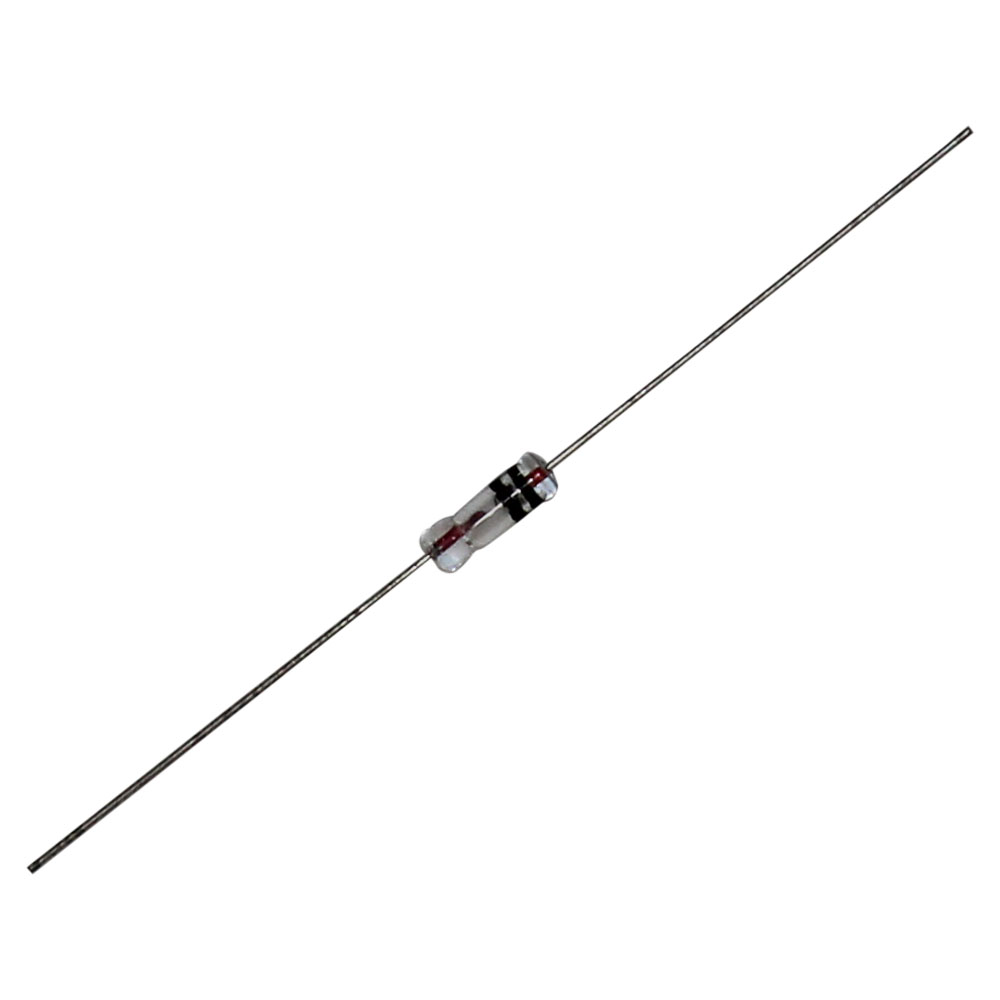
Just like resistors and capacitors, diodes are two-terminal electronic components that allow electric currents to flow in only one direction. Think of them as the one-way streets of electric circuits. So going back to the different element categories, diodes are basically conducting path elements.
There are two common types of diodes; semiconductor diodes and vacuum tube diodes.
In terms of practical application, diodes are most commonly used to convert Alternating Current (AC) into Direct Current (DC). But they’re also good for providing protection against sudden voltage spikes in electronics. A surge of voltage can happen when a power supply is suddenly interrupted, and this sudden burst of energy can sometimes damage the load. Connecting a diode across the inductive loads can suppress or subdue unexpected power surges.
What is it made of?
Semiconductor Diodes
- Semiconducting material
- Two (2) semiconductors (p-type and n-type)
Vacuum Tube Diodes
- One (1) sealed vacuum glass tube
- Two (2) electrodes (cathode and anode)
How does it work?
Semiconductor Diodes
Although semiconductor diodes are typically made of silicon, there are diodes out there that use other semiconducting materials like germanium and selenium. These types of diodes are also known as p-n junction diodes because they use both a p-type semiconductor (positive) and an n-type semiconductor (negative).
A semiconductor or p-n junction diode works in such a way that the extra electrons from the n-type semiconductor combine with the holes in the p-type semiconductor when both elements are brought together. This reaction causes a depletion zone with no free holes or electrons.
Usually, an electric current is typically capable of flowing through both semiconductors. However, this depletion zone makes it so that no current, regardless of strength or charge, can flow through it—and, by extension, the diode.
Vacuum Diode
A vacuum diode is made of two electrodes—a cathode and an anode—placed inside a vacuum-sealed glass tube.
By heating the cathode with a filament, a cloud of electrons—also called a space charge—forms inside the vacuum. This space charge effectively repels any further electrons that are typically emitted from the cathode, stopping them from reaching the other electrode (the anode). Ergo, the current flow is halted.
It starts up again when the anode is made positive, effectively canceling out the cloud of electrons.
It’s worth noting that in a vacuum tube diode, the electric current always flows from the cathode to the anode, and never the other way around.
Related Terms
Forward-Bias. In a semiconductor diode, current can flow through the junction again when the battery of an electric circuit is connected to the respective semiconductors (in other words, negative terminal to the n-type and positive terminal to the p-type).
Reverse-Bias. With respect to the forward-bias process, the reverse-bias process happens when the terminals are reversed—as in, negative terminal to p-type semiconductor, positive terminal to n-type. This pushes the holes and electrons away from each other, further widening the depletion zone.
AC to DC Conversion. This is arguably the most important—and most common—application of a diode. When an Alternating Current (AC) power supply is run through a diode, only half of the AC waveform actually passes through. This process, in turn, steadily produces continuous Direct Current (DC) without any ripples.
Relays

Relays are basically electromagnetic switches that can open and close circuits through electromechanical or electronic means. They’re typically used to regulate low currents in a control circuit, but they can also be used in circuits with higher electric currents.
As an electronic component, a relay is sort of a lever. It doesn’t need a lot of power to operate, which means you can leverage it against another circuit with larger amounts of current.
There are two types of relays: electromechanical relays (EMRs) and solid-state relays (SSRs).
What is it made of?
Electromechanical Relay (EMR)
- One (1) frame
- One (1) coil (typically copper wire)
- One (1) armature
- Spring
- Contacts
Solid-State Relay (SSR)
- One (1) input circuit
- One (1) control circuit
- One (1) output circuit
How does it work?
Electromechanical Relay
An EMR is made up of a frame, a coil, an armature, a spring, and conducting parts known as contacts. The frame basically holds all the other parts of the electronic component in place. The armature acts as the moving part of a relay switch. It’s moved by a magnetic field generated by the coil—which is typically a copper wire—wound around a metal rod. The contacts then open and close the circuit accordingly.
A power supply energizes the coil and metal rod to create the magnetic field that moves the armature. The magnetic field magnetizes the coil, in turn causing it to attract a ferrous plate mounted on the armature (and effectively move it). When the current stops, the magnetic field subsides. The coil stops attracting the plate and the armature is released back into its resting position thanks to the spring.
EMRs can have single or multiple conducting parts or contacts.
Solid-State Relays
SSRs are composed entirely of circuits; a control circuit, an input circuit, and an output circuit. The input circuit is activated only when a voltage higher than the relay’s specified pickup voltage is applied. Conversely, any voltage lower than the relay’s specified minimum amount deactivates it.
The control circuit, on the other hand, takes the signal from the input circuit and transfers it to the output circuit. So think of the input circuit as the coil in an EMR. The output circuit, in turn, performs the electronic component’s specified action (typically switching or activating the connected load). This makes it the equivalent of the contacts in an EMR.
Solid-state relays are quickly becoming a fan favorite due to how simpler, cheaper, and considerably faster they are compared to electromechanical relays.
Related Terms
Single Break (SB) Circuits & Double Break (DB) Circuits. Electromechanical relays can have single or multiple contacts. Circuits that use only one contact are called Single Break circuits, or SB circuits. Double Break, or DB circuits, are ones that use two contacts. SB circuits are typically used for low-power devices. DB circuits, on the other hand, are more suited to high-power ones.
Normally Closed (NC) & Normally Opened (NO) Relay. EMRs and SSRs are either Normally Closed (NC) or Normally Opened (NO) relays. NC relays refer to electronic components that have contacts that remain closed when there is no power supply. NO relays, on the other hand, use contacts that remain open without a power supply.
Quartz Crystals
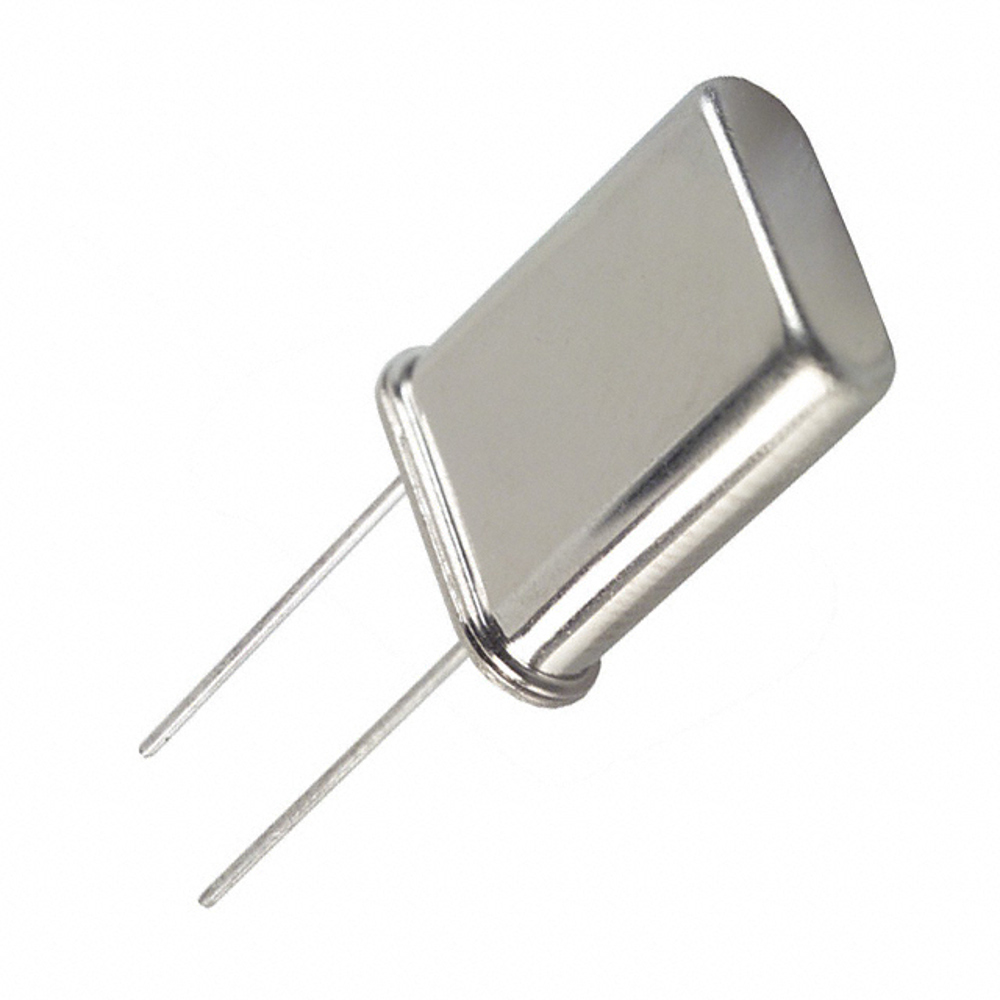
As a naturally occurring form of silicon, quartz is a natural semiconductor. So although quartz crystals do have a dozen or so applications in electronics, they’re most commonly known—and used—as resonators. They’re one of the rare few natural materials that can exhibit the piezoelectric effect or the process of producing vibrations to generate a voltage.
Because the demand for quartz crystals is quite high, people have taken to synthetically producing them in large quantities.
What is it made of?
- Synthetically manufactured crystals
OR
- Naturally occurring crystals
How does it work?
By applying pressure on one side of the crystal, vibrations start to take place. These vibrations eventually generate an AC voltage that travels across the crystal.
This piezoelectric effect also makes quartz crystals an ideal oscillator. The resulting electronic signal happens at a precise frequency, depending on the cut and size of the crystal. The reliability of this electronic component makes it an almost non-negotiable element in microprocessors and radio frequency equipment.
Quartz crystals can be cut into hexagons with end pyramids. However, rectangular slabs have proven to be an easier, more practical cut. As rectangular slabs, quartz crystals can then be placed between two metal holding plates for better security. Other common quartz cuts are cylinders, squares, and full rectangles.
Conclusion
To recap here is what we covered:
Table of contents:
- Electronic Circuits
- Elements of an Electronic Circuit
- Conducting Path
- Voltage Source
- Load
- Type of Electronic Circuits
- Closed Circuit
- Open Circuit
- Integrated Circuit
- Short Circuit
- Printed Circuit Boards (PCBs)
- Electronic Components
- Capacitors
- Resistors
- Diodes
- Relays
- Quartz Crystals
As we mentioned earlier, there are definitely more than five electronic components that make up a typical electronic circuit. But these five—capacitors, resistors, diodes, relays, and quartz crystals—are the simplest and most common of them, by far.
Whether you have a vested interest in understanding how they work or you’re just satisfying your curiosity, it’s always good to start with the basics.
For professional electronic engineers and casual hobbyists, a solid grasp of the fundamentals before diving into the more complex structures is absolutely necessary.
If you have any questions about purchasing the best electronic components for your needs please don’t hesitate to contact us and check out our online store!
